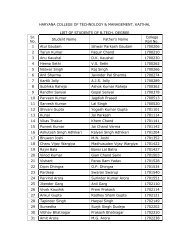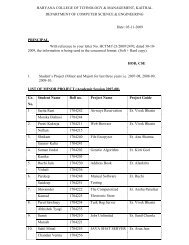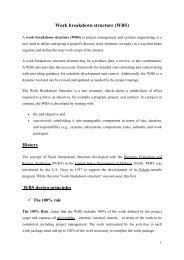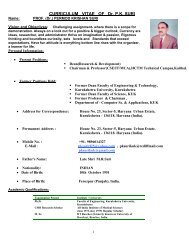You also want an ePaper? Increase the reach of your titles
YUMPU automatically turns print PDFs into web optimized ePapers that Google loves.
LECTURE NOTES OF ADVANCED DATA STRUCTURE (MT-CSE 110)<br />
breadth‐first search to uniform‐cost search which considers the path costs.<br />
Nevertheless, if the graph is not weighted, and therefore all step costs are<br />
equal, breadth‐first search will find the nearest and the best solution.<br />
Applications of BFS:‐<br />
• Breadth‐first search can be used to solve many problems in graph<br />
theory, for example:<br />
• Finding all connected components in a graph.<br />
• Finding all nodes within one connected component<br />
• Copying Collection, Cheney's algorithm<br />
• Finding the shortest path between two nodes u and v (in<br />
an unweighted graph)<br />
• Finding the shortest path between two nodes u and v (in a weighted<br />
graph: see talk page)<br />
• Testing a graph for bipartiteness<br />
• (Reverse) Cuthill–McKee mesh numbering<br />
Minimum Spanning Tree:<br />
A minimum spanning tree is a subgraph of an undirected weighted graph G,<br />
such that<br />
• it is a tree (i.e., it is acyclic)<br />
• it covers all the vertices V<br />
– contains |V| ‐ 1 edges<br />
• the total cost associated with tree edges is the minimum among all<br />
possible spanning trees<br />
• not necessarily unique<br />
A spanning tree is a tree that contains all of the vertices in the graph. The<br />
minimum spanning tree is a spanning tree in which the total weight of the lines<br />
are guaranteed to be the minimum of all possible trees in the graph.<br />
Prepared By :<br />
Er. Harvinder Singh<br />
Assist Prof., CSE, H.C.T.M (Kaithal) Page ‐ 92 ‐







